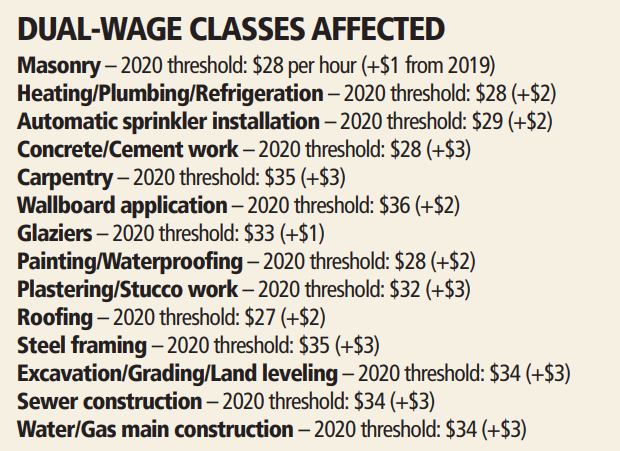October 2024 – Workers’ Compensation – How to Streamline Your Insurance Policy Audit

ARE YOU due for a workers’ compensation premium audit?
Audits are how insurance rates are determined, and it’s possible that an audit will uncover information that can actually save you money — or not if you’ve hired additional staff and haven’t notified your insurer.
In any case, it pays to be prepared and you can do so with the following tips:
Note staffing changes – Let us know when there are changes in your staffing, payroll, or areas of operation. This is important not just at audit time, but all the time. Your rates are based on variable rating information, including the number of employees, job classifications, and the states in which you operate. Updated information results in more accurate premium assessments.
Get your records ready – Your auditor will need to see records such as federal and state tax returns, ledgers, checkbooks, contracts, and employee or contractor tax documents. If you prepare your records in advance, you’ll speed up the audit process.
Gather all payroll information – Make sure you break out various types of compensation in your records. For example, to set your premium, we consider pay but not contributions to employee benefits packages and other perks, so it’s important to make sure your records are clear on the various types of compensation. Also, make sure overtime pay is clearly defined since it’s classified as regular pay for workers’ compensation insurance purposes.
Ensure that contractors have their own insurance – This is important not only from an audit standpoint but from a liability perspective as well. If an uninsured contractor has an accident
while performing work on your behalf, you can be held liable. If an audit identifies contractors for whom you don’t have certificates of coverage, you can be charged for their premiums.
Remain on hand to answer questions – As your auditor reviews your material, he or she may have questions or need additional data. If you are available to provide answers, your audit will be completed more quickly.
The takeaway
By following these tips, you’ll be more prepared for your workers’ compensation premium audit. A fast, efficient audit process can save time for both you and your auditor, so it pays to be prepared.
Workers’ Comp – New Experience Rating, Physical Audit Levels Set

Starting in 2020, the threshold for California employers to be eligible for experience rating (X-Mod) has been reduced by order of the state insurance commissioner.
Commissioner Ricardo Lara in September approved the recommendations by the Workers’ Compensation Insurance Rating Bureau to lower thresholds for determining eligibility for experience rating and when a carrier needs to perform a physical audit of an employer’s payroll records.
NEW THRESHOLDS
Annual physical audit
As of Jan. 1, 2020: Any employer with $10,500 or more in annual premium.
Current threshold: $13,000 or more in annual premium.
Threshold for experience rating (to have an X-Mod)
As of Jan. 1, 2020: $9,700 in annual premium.
Current threshold: $10,000 or more in annual premium.
“Physical audit” is defined as an “audit of payroll, whether conducted at the policyholder’s location or at a Remote site, that is based upon an auditor’s examination of the policyholder’s books of accounts and original payroll records (in either electronic or hard copy form), as necessary to determine and verify the exposure amounts by classification.”
The eligibility rating threshold is the amount of payroll developed during the experience period in each classification, multiplied by the expected loss rates for each class. If the total for all assigned classes is at or above the threshold, then the employer is eligible for an X-Mod.
Changes to dual-wage class codes
Lara also approved the Rating Bureau’s recommendations for changes to a number of construction dual-wage class codes. While most workers’ comp classes have one rate, in some classes the difference in claims costs between high- and lowerwage workers is so great that a dual-wage classification is needed. In those cases, the workers above the threshold rate are assigned one rate, while those below that threshold are assigned a higher rate. The new thresholds are for 14 construction classifications, and any workers above the threshold will have a lower rate applied.

WORKER’S COMP – Most Common Audit Mistakes: What to Look For

No company owner wants to undergo a workers’ compensation audit, but they are a fact of life if you run a business and have employees.
Unfortunately, many audits don’t go smoothly and sometimes your insurer may make mistakes. Missouri-based Workers’ Compensation Consultants, which helps employers through the audit process, recently listed the 10 most common audit mistakes insurers make.
The list highlights a common problem and how you can detect the mistakes. Insurance companies allow you to review the audit with your broker. If you have received an audit bill that is obviously overstated, you should contact us.
Here are the things to look for when reviewing an audit by your insurance company:
Wrong class code – Misapplication of job classifications occurs in many audits. With hundreds of job classes to choose from, mistakes can happen. Talk to us and review your old policies to see if any of your class codes have
changed.
X-Mod is changed – After your insurer finishes the audit, it will use the information to calculate your premium. When that happens, it has to include your X-Mod to get the right rate. But sometimes the insurer may use an incorrect X-Mod.
Subcontractors are counted – Sometimes insurers will include subcontractors as employees, which results in a new audit bill to account for the additional “employees.”
But if they are genuine subcontractors, they should not be counted. Often, uninsured contractors will be included as employees. Make sure to use insured contractors only.
Disappearing credits – Most policies will have some sort of premium credits or other modifiers. Sometimes during audits, the insurer will remove them when recalculating the premium they think you owe. Watch out for missing credits and other modifiers if you get an audit bill, like:
- Premium discount
- Schedule credits
- Deductible credits
- State-specific credits
Audit worksheets missing – If the auditor fails to provide you with audit worksheets, which are used do compile your payroll and other audit information, you should ask to check their work.
They will provide you with the information you need to carry out such a check.
Your rates changed – The rates you are charged at the beginning of your policy period must remain the same for the entire period. If your base rates have changed, the insurer may have made a mistake.
Separation of payroll – Depending on your industry, you may or may not be able to split your employees’ payroll between job classifications (like cabinet installers and sheetrock hangers). This is a pinch point when errors can occur. If the auditor says you are not allowed to split job classifications even though you have in the past, your audit may be in error.
Unexpected large premium due – If you get a significant bill for your insurance company after your audit, the auditor may have made mistakes, particularly if you know that your employment has remained relatively stable and you’ve had no significant claims, if any. If it seems out of whack, call us.
Payroll data doesn’t match – If there is a discrepancy between your payroll data and what you see on the audit, a mistake may have been made. Try to match the payroll on the audit with that generated from your accountant. If the insurer made a mistake, you could end up paying for phantom payroll numbers.
No physical audit – There are three types of audits:
- Mail audit
- Phone audit, and
- Physical auditThe mail and phone audits are prone to errors, since neither you nor your staff likely have any experience in premium auditing. If you have a big bill after a mail or phone audit, mistakes could have been made.





